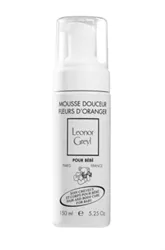
The Best of Hair Talk #1 DEA & Chemicals In Hair Care Products
IntroductionIf you are a frequent visitor to The HairBoutique.com chances are that you have wandered over to the Original Hair Talk board. Over 25,000 different postings have been added to Hair Talk since the board began over 4 years ago. Because of the sheer number of messages we have had to slowly migrate some of the messages to the Hair Boutique archives. While all of the Hair Talk threads are always worthwhile and interesting, some of the threads contain technical hair related information that I know HairBoutique.com visitors would love to have available. With this in mind I have searched through the 25,000 Plus messages and have put together a series of The Best of Hair Talk topics that contain hair related information that I think will be useful for ongoing reference. To maintain authenticity, I have listed all posts in a specific thread. However, to protect privacy of the Hair Talk posters, I have removed any email or personal information where possible. If anyone ever has a concern with their posts being included in the Best of Hair Talk series please email me and I will alter or remove any posts that are in question. Jeff and I sincerely thank everyone who is a regular poster on Hair Talk and all the HairBoutique.com Message Boards. These boards are for designed for all our visitors to share their thoughts, feelings, fear, victories and challenges in their life. First Topic: Diethanolamine (DEA) & Chemicals In Hair Care ProductsWhether you buy your shampoo and conditioner at the local grocery store, at your favorite salon you will be hard pressed to find a product that does not contain either Lauramide DEA or Cocamide MEA. DEA is considered part of a group of potentially "dangerous" chemicals that are used in just about every hair care product on the traditional marketplace. While some consumers accept the fact that just about everything that they buy contains potentially harmful chemicals of some sort, there are other consumers that have major concerns about these additives.
Neither group of consumers is right or wrong. Yes, almost everything we eat and buy in today's world contains additives that can do everything from cause a headache to initiate cancer in our bodies. The options are to buy only products that contain as little additives as possible or buy products that contain additives and take a calculated risk whether the product will cause just minor or major harm. A key to deciding which option to take is being as informed as possible. The topic of chemicals in hair care products has come up a few times in Hair Talk. We have been lucky over the years at Hair Talk to have a regular contributor by the name of Laura Jane who is working on her Ph.D in a scientific area of study. This makes it a little easier for her to provide some "on-the-spot" research for the relevant Hair Talk topics. Laura Jane has been fantastic at providing scientific information about hair chemicals. (Thank you Laura Jane) What Is DEADEA is known as a "surfactant". Surfactants are designed to make lots of bubbles and clean the hair. These agents are used in everything from shampoos to toothpaste, shaving cream, laundry detergent, dish soap and many industrial cleaning products as well. Ingredients that create lather are cocamide MEA, lauramide MEA, lauric DEA, polysorbate-20. Cleansing agents and lather builders are the essence of every shampoo you buy Research shows that surfactant like DEA may strip away vital amino acids like serine, histamine, glycine, alanine and lysine from keratin (hair & skin protein). Harsh surfactants have a skin roughening potential that increases along with the percentage used, leaving the skin and hair feeling dry and unmanageable, looking dull and lifeless the more you use them. They rob the skin and hair of what they need. How The Hair Talk Threads Are OrganizedThe messages are always posted with the most recent response as the end of the thread and the first post at the beginning. The thread below was initiated by another Hair Talk regular, Kira, on September 23rd and dealt specifically with DEA in hair care products. The results of this thread are very interesting and provide food for thought on the topic of chemicals, specifically DEA, used in hair care products. Yikes!! Posted By: KiraI just found the following (rather disturbing) information from a fax I received (unsolicited) from a Health Wise newsletter and thought that I would share. "National Toxicology Program Reports Findings: Reported recently by Dr. Samuel S. Epstein, M.D., Professor Environmental Science University of Illinois School of Public Health. The National Toxicology Program (NTP) recently found that repeated skin application to mouse skin of diethanolamine (DEA), or its fatty acid derivative cocamide-DEA, induced liver and kidney cancer. Besides this 'clear evidence of carcinogenicity,' NTP also emphasized that DEA is readily absorbed through the skin in organs, such as the brain where it induces chronic toxic effect. High concentrations of DEA-based detergents are commonly used in a wide range of cosmetics and toiletries, including shampoos, hair dyes and conditioners, lotions, creams, and bubble baths, besides liquid dishwashing and laundry soaps. Lifelong use of these products thus clearly poses avoidable cancer risks to the great majority of U.S. consumers, particularly infants and young children." Source: Cancer Prevention Coalition Contact: Samuel S. Epstein, M.D., Professor of Environmental Medicine at the University of Illinois Chicago, School of Public Health and Chairman, Cancer Prevention Coalition. They go on to say that according to their Material Safety Data Sheets propolene glycol (if overexposed) can cause liver abnormalities and kidney damage and Sodium Laurel Sulfate "penetrates your eyes, brain and liver and remains there long term. SLS can also damage your immune system, cause blindness, induce certain types of ulcers, and react with other ingredients to form potent cancer-causing compound known as NDELA." To top it all off the aluminum in our deodorant and cosmetics can contribute to Alzheimer's disease according to The World Health Organization. Yikes! Is nothing safe anymore? Re: Yikes!! Posted By: Laura Jane In Response To: Yikes!! (Kira)First of all, calm down. This report may be accurate, and I'm very glad you mentioned it here, and I will check up on it from a scientific standpoint, but there are many reasons to question the validity of this information. I'll list just a few. First, "Health Wise" is NOT a refereed scientific or medical journal. It is at best a popular-press newsletter. (I don't know who publishes Health Wise - it's possible that it could be put out by some sort of pharmaceutical company, which would lead me to question the fairness of its reporting.) The popular press has a tendency to misinterpret or overstate scientific findings on a regular basis. I *never* trust science reporting in the popular press - if something in the popular press catches my eye, I find out where the actual research article was published, and look at that. Science journalists as a group get things wrong at least as often as not (although there are some excellent ones out there). Until I see this research published in a refereed scientific or medical journal, I'm not going to give it a whole lot of importance. I am giving it enough importance that I'm going to find out whether it has been published somewhere scientifically reputable. I will post what I find out. Another reason to be concerned - the organization that is putting this information out (the "National Toxicology Program" - watch out for putting too much trust in such names; they don't necessarily have any official standing; the word "national" doesn't always mean anything significant) is headed by the researcher who claims to have proved this information. If he's the chair of the group, then the group's endorsement may mean no more than if he'd simply said it himself. Don't attach undue weight to it. I also have to wonder why an MD is a professor of environmental science - that's not exactly typical. This report is a prime example of irresponsible reporting. It does not describe what levels of DEA were used in the study, nor their relationship to the levels found in cosmetic products. They claim that "high levels" of DEA-based compounds are found in cosmetic products, but what is their basis for comparison? Often, studies of the type supposedly performed here are done with many times the levels of a compound actually encountered by any typical person. Let's also consider the choice of experimental animals. There are a wide variety of excellent reasons for using mice in studies such as this, but the data found in mice is not necessarily 100% applicable to humans. The immune system of the mouse is very different from that of the human, for example. To address the issues of propylene glycol - well, yes, overexposure to it can be dangerous. So can overexposure to most things. The key here, though, is overexposure, and the method of exposure, which is not mentioned in this report at all. I also have a few concerns about the reliability of their reporting - if they can't even spell the name of the compound correctly (it's "propylene", not "propolene"; and it's "sodium lauryl sulfate", not "sodium laurel sulfate"), I'm not at all convinced of their ability to read an MSDS correctly. However, if you're concerned, I'll take a look at the MSDSs for those compounds myself and let you know what I find. When judging these types of reports, one must also consider what the alternatives are. For example, in the case of sodium lauryl sulfate, which is found in many soaps and shampoos, what other options do you have? Lack of cleanliness is a lot more hazardous on any realistic scale than the sodium lauryl sulfate. Also consider the levels to which you are being exposed - generally quite low. As far as aluminum and AD, that link is merely suggestive and not conclusive. I wouldn't chew on foil, and I choose deodorant (which is aluminum-free in almost all cases) over antiperspirant, but I don't go overboard. Besides, you're a lot more likely to have problems from aluminum ingestion from baking powder than antiperspirant. Yikes! Is nothing safe anymore? Things are no less safe than they ever were. It's just a question of knowing more about the dangers. As I said, I'll check out what reliable information is available on these subjects and let you know. Meanwhile, don't panic. Laura Jane So here's the story... Posted By: Laura Jane In Response To: Yikes!! (Kira)As promised, I have checked out the available information regarding this story. I couldn't find Health Wise, so I can't speak for the article in that publication, but I can tell you about the National Toxicology Program and the original research. The National Toxicology Program is part of the National Institutes of Health, a government agency responsible for funding much of the biological research currently carried out in this country. It appears to be far more scientific than bureaucratic - its mandate appears to encompass the testing of common chemicals. It does not set policy - it passes the information it finds on to other branches of the government, such as (in this case) the FDA (Food and Drug Administration). These other branches of the government are responsible for reviewing the data obtained, possibly conducting further studies, and making decisions on policy. As for the study itself - well, as I expected, there is good news and there is bad news. First of all, the data are far from conclusive. There is absolutely no reason to go into a panic right now. There is, in my judgment, some reason for concern. I plan to keep an eye on the issue, but I'm not going to stop washing my hair, and I'm not going to spend a whole lot of time searching for a shampoo without DEA derivatives in it. The studies were actually conducted on both rats and mice and tested DEA (diethanolamine) and three DEA derivatives, those based on coconut oil (commonly found in shampoo), lauric acid, and oleic acid. Scientists applied the compounds to the skin of both rats and mice at various levels. Since the compounds were dissolved in ethanol, other rats and mice had ethanol only applied to their skin as a control, to be sure the ethanol was not having any effect that might be mistaken for an effect of the chemicals they were trying to test. The results, in brief, were that in mice, high levels of DEA over fairly long (for a mouse) periods of time somewhat increase the incidence of some types of tumors, although there was absolutely no increase in mortality. (That is, the mice didn't die from the tumors.) In rats, on the other hand, DEA appeared to have *absolutely no effect*, even at high levels. Which of these animals better represents human reactions to this chemical is, of course, still unknown. However, when evaluating this sort of study, you have to read carefully - high amounts of this compound were used, and *they were not washed off*. The DEA derivatives also appeared to cause a small increase in the same types of tumors in mice, and had no effects in rats. There is every reason to believe that this is due to small amounts of DEA which were used in preparing the derivatives which remained in each batch. If that is the case, it should be fairly simple to remove the contaminating DEA (which is completely unnecessary for the shampoo) and have perfectly safe derivatives, IF DEA is found to be harmful to humans (which is still far from being proven). At this point, the FDA is reviewing the studies, along with other information. What the FDA will decide is, of course, still up in the air. I suspect it may include further testing. If you're interested, the NTP has a web site at http://ntp-server.niehs.nih.gov You can view the NTP's report for non-scientists at http://ntp-server.niehs.nih.gov/htdocs/Liason/DEA.html If you're interested in some more of the scientific details, you might go: http://ntp-server.niehs.nih.gov/htdocs/pub.html and do a search on "diethanolamine". The NTP statement on these results says, "Inquiries regarding the possible risks to humans or about consumer products should be directed to the Center for Food Safety and Applied Nutrition, Food and Drug Administration, telephone 1 800 FDA-4010." I haven't called them yet, but I probably will. I hope this is informative. If anyone has any more questions, please let me know - I'll do what I can to answer them. Laura Jane Posted By: Karen <[email protected]> In Response To: Re: Yikes!! (Laura Jane)Thank you Laura Jane for your explanation. I agree with your assessment of "irresponsible reporting" and have seen it a lot. I also agree that you have to access your risks. I just had this discussion with my doctor who was freaking out because I was resisting some tests that she felt I needed. That lead to a big conversation about the dangers of X-Rays on the body. As she pointed out, so you avoid the x-rays and thus avoid tests like mammograms and then you die of breast cancer. Or you have a test with x-rays and maybe you get cancer. Who knows. It is all relative. So as you said...you have to weigh your risks and go the best direction you can. Thanks again for all the information. Karen Posted By: Clare In Response To: Yikes!! (Kira)I use deodorant and not antiperspirant, which contains aluminum. I think DEA is one of the "antibacterial" compounds found in many antibacterial products. I have seen it listed in antibacterial soaps. Finding Our More About DEAOne of the best ways to find out more about DEA and other hair care chemicals is to do a search on the major search engines like Alta Vista, Lycos, Yahoo and enter the words "DEA or diethanolamine" Here are some other sites that discuss dangers of chemicals in hair care products or DEA specifically: Senator Edward M. Kennedy's web site(1) Kennedy to Fight Cosmetic Regulation changes (9/5/97) (2) Kennedy Floor Statement on FDA Reform (9/8/97) Center For Disease ControlLists dangerous levels of Diethanolamine (DEA) Diethanolamine TWA 3 ppm (15 mg/m3) ConclusionWhether you should avoid products with DEA has to be a personal decision. The best way to make an informed decision is to do your research. Laura Jane made a good point, sometimes information is misrepresented. This is not to say that DEA is not potentially dangerous or that we should discount information that is provided. What is says is to always make your own decision. Some people believe that when these alarming reports come out that they are being presented by uninformed people. There have also been cases of "scare emails" passing around the Internet about other hair care chemicals like Sodium Lauryl Sulfate (SLS). The key point is to evaluate for yourself whether the emails or reports in question have any concrete evidence or is it scare tactics used by uninformed people. Once you make an informed decision then you have the option to select products that do not contain DEA or other chemicals that you may have concern about. There are some companies on the market that sell chemical free or low chemical formulations. Unfortunately, while the products may be deemed safer, they often don’t produce the same results in terms of cleanliness, shine or conditioning that the traditional products do. There are also books available that have recipes on how to make at-home shampoos and conditioners. It is possible to make your own, however this takes time and requires that you be willing to try several formulas till you find one that works best for your hair. Some Final Words Of ThanksThis review needs to end in a very specific way. It seems only fitting that I end this review with a thank you to Victor from the Hair Boutique. Victor has always shown tremendous support for Jeff and I and The Hair Boutique. Victor is never too busy to respond to email, give sage advice ...webmaster to webmaster....or send great tidbits of hair information. Even in the days before we were the Hair Boutique, Victor was helpful and encouraging. He always had great ideas and information and was always willing to share them freely. Social Media Network InformationPlease follow me on Twitter at: http://Twitter.com/HairBoutique. I look forward to meeting new people Thank you for visiting us at The HairBoutique Blog and for leaving your comments. They are very much appreciated. We apologize in advance but must remove any direct advertisements or solicitations. Original Publication Date: 1/2001 - Revised Publication Date: 05/22/10 |
| If you want to talk more about this or other hair care articles on HairBoutique.com or anywhere else, please post a message on HairBoutique.com's Hair Talk Forums.
|
Social Media Network Information
Please follow us on Twitter at: https://Twitter.com/HairBoutique. I look forward to meeting new people from all walks of Twitter and learning from their Tweets.


















